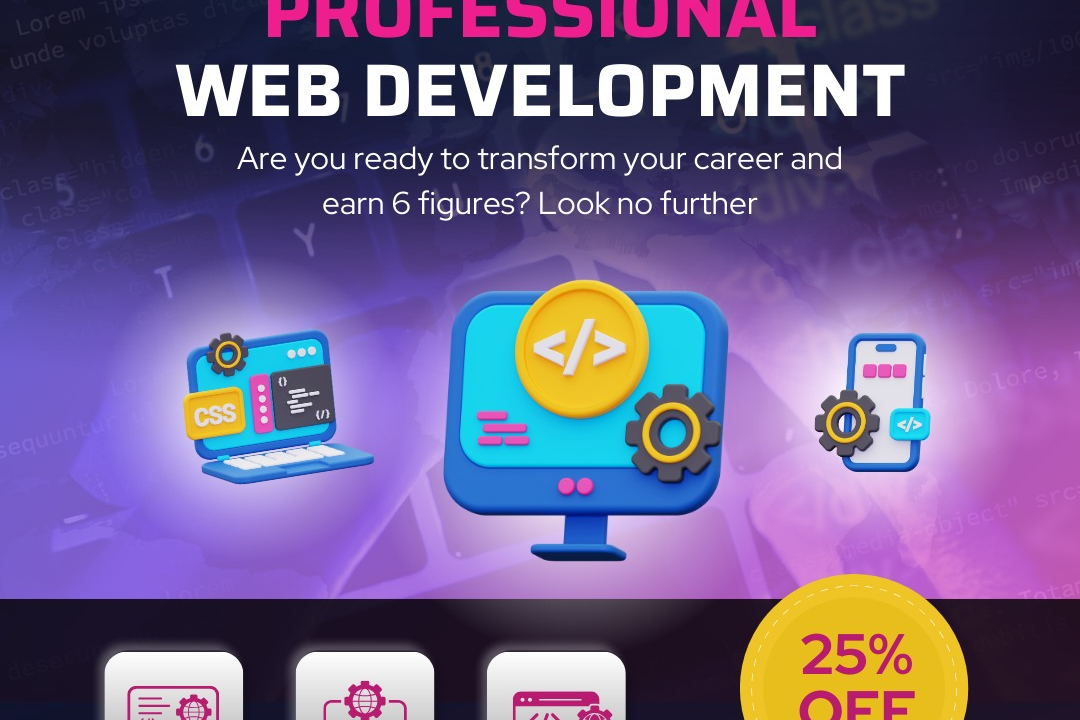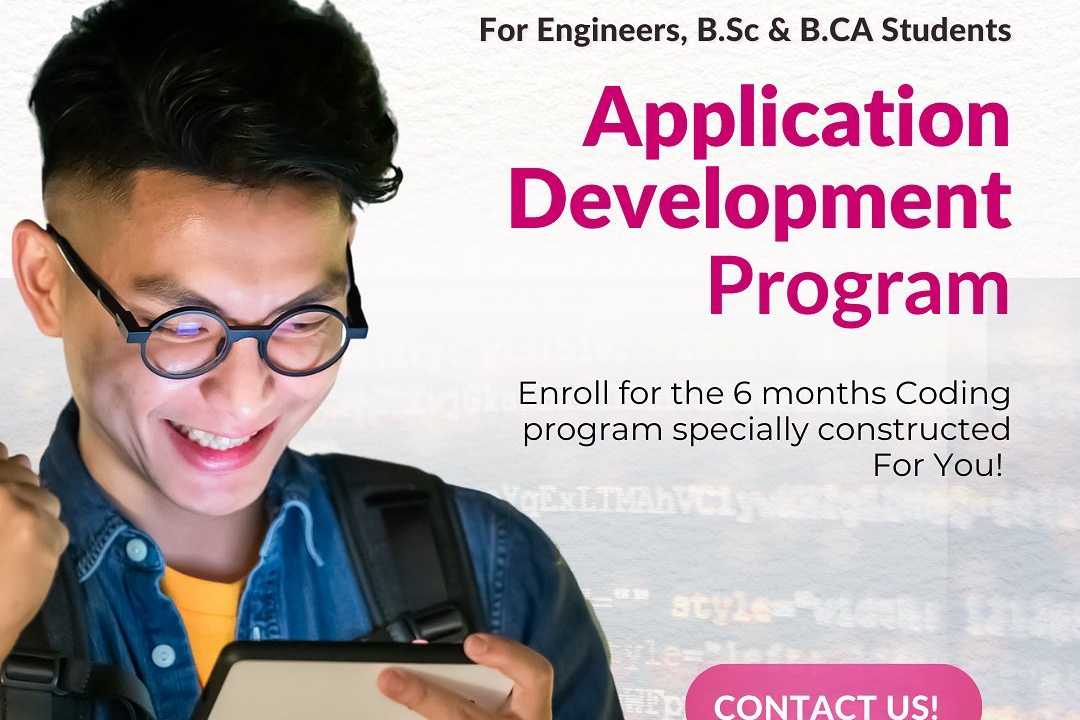Fibonacci Series Sample Program In Php
A Fibonacci series program in PHP is a script that generates a sequence of numbers where each number
Fibonacci Series Sample Program In Php
A Fibonacci series program in PHP serves as a fundamental example for understanding loop constructs, recursive functions, and sequence generation in programming. It helps learners grasp essential coding principles while demonstrating how mathematical sequences can be translated into code. Implementing this program enhances problem-solving skills and provides a practical approach to mastering control structures, making it a valuable exercise for those starting their journey in PHP development.
To Download Our Brochure: https://www.justacademy.co/download-brochure-for-free
Message us for more information: +91 9987184296
A Fibonacci series program in PHP serves as a fundamental example for understanding loop constructs, recursive functions, and sequence generation in programming. It helps learners grasp essential coding principles while demonstrating how mathematical sequences can be translated into code. Implementing this program enhances problem solving skills and provides a practical approach to mastering control structures, making it a valuable exercise for those starting their journey in PHP development.
Course Overview
The “Fibonacci Series Sample Program in PHP” course provides a concise introduction to generating Fibonacci sequences using PHP. It covers basic concepts of loops and recursion, guiding learners through writing efficient code to produce Fibonacci numbers. Ideal for beginners, this course emphasizes practical implementation and foundational programming skills essential for further PHP development.
Course Description
Learn to generate Fibonacci sequences in PHP with this practical sample program. Designed for beginners, this course covers basic PHP syntax, loops, and logic to efficiently produce Fibonacci numbers, laying a strong foundation for further programming projects.
Key Features
1 - Comprehensive Tool Coverage: Provides hands-on training with a range of industry-standard testing tools, including Selenium, JIRA, LoadRunner, and TestRail.
2) Practical Exercises: Features real-world exercises and case studies to apply tools in various testing scenarios.
3) Interactive Learning: Includes interactive sessions with industry experts for personalized feedback and guidance.
4) Detailed Tutorials: Offers extensive tutorials and documentation on tool functionalities and best practices.
5) Advanced Techniques: Covers both fundamental and advanced techniques for using testing tools effectively.
6) Data Visualization: Integrates tools for visualizing test metrics and results, enhancing data interpretation and decision-making.
7) Tool Integration: Teaches how to integrate testing tools into the software development lifecycle for streamlined workflows.
8) Project-Based Learning: Focuses on project-based learning to build practical skills and create a portfolio of completed tasks.
9) Career Support: Provides resources and support for applying learned skills to real-world job scenarios, including resume building and interview preparation.
10) Up-to-Date Content: Ensures that course materials reflect the latest industry standards and tool updates.
Benefits of taking our course
Functional Tools
1 - PHP Programming Language: PHP (Hypertext Preprocessor) is a widely used open source scripting language primarily suited for web development. In this course, PHP serves as the foundational tool for implementing the Fibonacci series, enabling students to learn server side scripting. Its syntax is easy to understand, making it suitable for beginners, yet powerful enough for complex computations. Through PHP, learners can develop dynamic web applications that incorporate algorithms like Fibonacci sequences, preparing them for real world programming challenges. This tool allows students to practice writing clean, efficient code and understand core programming concepts such as loops, functions, and conditional statements within a practical context.
2) Code Editor: A code editor like Visual Studio Code, Sublime Text, or PHPStorm is essential for writing, editing, and debugging PHP scripts. These editors offer syntax highlighting, auto completion, and error detection features that streamline the coding process. For beginners, user friendly interfaces help in understanding code structure and minimizing mistakes. Students learn to write modular code, organize their scripts effectively, and use features like version control integration. The choice of a good editor enhances productivity and encourages best coding practices, ensuring that learners can focus on logic development without being overwhelmed by technical barriers.
3) Local Development Environment (XAMPP/WAMP/LAMP): To execute PHP scripts locally, students are introduced to lightweight web server environments like XAMPP, WAMP, or LAMP. These packages provide Apache server, PHP, and MySQL, creating an all in one setup for testing and running PHP programs on personal computers. Setting up this environment teaches learners about server configuration, database integration (if needed), and file management. It ensures a seamless development experience, where students can write code, refresh their browser, and view results instantly. This practical exposure mimics real world deployment setups, advancing their understanding of web application development.
4) Web Browser: Modern web browsers such as Chrome, Firefox, or Edge are used to test and display the output of PHP scripts. Since PHP is a server side language, scripts are run on the local server environment, and the results are rendered in a browser. Students learn to interpret output, troubleshoot errors visually, and understand how web servers communicate with clients. Browsers also allow developers to use developer tools for inspecting code, monitoring network activity, and debugging issues related to server responses. Mastery of browser tools enhances troubleshooting skills and deepens understanding of client server interactions.
5) Debugging and Testing Tools: Debugging tools such as Xdebug or integrated IDE debuggers are employed to identify errors and optimize code. These tools enable step by step execution, variable inspection, and breakpoint setting, which are invaluable for troubleshooting logical mistakes in Fibonacci implementations. By learning to debug effectively, students develop precision and patience, reducing runtime errors and improving code quality. These tools also facilitate understanding of code flow and behavior, fostering a disciplined approach to programming. Proper debugging skills are fundamental for professional development, ensuring reliable and maintainable software solutions.
6) Documentation and Commenting Standards: While not software tools per se, adhering to documentation practices is crucial for clarity. Students are taught to use comments within their PHP scripts to explain logic, describe functions, and mark sections of code. This habit improves code readability, making collaboration easier and simplifying future modifications. Learning to document code properly encourages disciplined coding standards, which are vital in professional settings. Clear commenting in Fibonacci programs aids learners in understanding their logic, reviewing algorithms, and sharing knowledge with peers or instructors, ultimately enriching their coding proficiency.
7) Version Control Systems (Git): Incorporating Git into the course educates students on tracking changes, collaborating with others, and managing different versions of their code. Students learn to initialize repositories, commit updates, create branches, and merge changes, which fosters disciplined development practices. Using version control enhances transparency and accountability in coding projects, enabling learners to revert to previous states if needed. Familiarity with Git prepares students for real world teamwork environments, helps manage code evolution efficiently, and promotes disciplined coding habits when working on Fibonacci or other algorithmic projects.
8) Project Management and Workflow Tools: Tools like Trello, Jira, or Asana help learners organize their coding projects, set milestones, and track progress. Such project management practices teach students to plan their Fibonacci algorithm development systematically, allocate time for testing, debugging, and refinement. Adopting structured workflows ensures timely project completion and enhances productivity. These skills prepare learners for professional environments where managing multiple projects efficiently and collaborating effectively is essential for success.
9) Educational Coding Challenges platforms (LeetCode, HackerRank, Codewars): Using online coding challenge platforms exposes students to real time problem solving scenarios, including Fibonacci sequence variations. These platforms offer a range of difficulties, allowing learners to practice their algorithms, optimize their code, and receive instant feedback. Engaging with such platforms fosters critical thinking, improves coding speed, and builds confidence in implementing algorithms beyond static projects. They serve as supplemental resources to reinforce understanding and give practical experience in algorithm design.
10) Automated Testing Frameworks (PHPUnit): Introducing testing frameworks enables students to write automated tests for their Fibonacci implementations, ensuring correctness and robustness of their code. Learning to write unit tests encourages good software engineering practices, like designing testable functions and validating outputs systematically. Automated testing reduces manual debugging efforts and accelerates development cycles. This exposure helps learners understand the importance of code reliability and prepares them for maintaining larger, more complex systems in professional settings.
11 - Learning Resources (Tutorials, Documentation, Forums): Access to quality tutorials, official documentation, and developer forums like Stack Overflow helps students troubleshoot problems, understand best practices, and deepen their knowledge. Encouraging active engagement with community resources cultivates independent problem solving skills and a growth mindset. These outlets serve as ongoing support systems, providing hints, solutions, and learning tips that enhance mastery over Fibonacci algorithms and PHP programming overall.
12) Performance Optimization Techniques: As students progress, they learn about optimizing their Fibonacci algorithms for efficiency, such as using memoization, iterative approaches, or matrix exponentiation. Understanding these techniques teaches learners how to handle large input values without excessive computational cost. It instills a mindset oriented towards writing scalable and performant code, which is critical in real world applications where efficiency impacts user experience and resource utilization.
13) Presentation and Reporting Tools: To showcase their projects, students might utilize tools like Markdown, PowerPoint, or online code sharing platforms. Learning to document their Fibonacci algorithms and project outcomes helps develop communication skills, an integral part of professional development. Presenting their work clearly demonstrates comprehension and allows for peer review or instructor feedback, fostering collaborative learning and continuous improvement.
14) Integration with Front End Technologies: For a comprehensive understanding, students can connect their PHP backend with front end frameworks like HTML, CSS, and JavaScript. This integration allows dynamic visualization of Fibonacci sequences, such as graphical representations or interactive charts. Such skills expand students’ ability to develop full stack applications, making their projects more engaging and realistic, which enhances their portfolio and job readiness.
15) Data Structures and Algorithms (beyond Fibonacci): To deepen their understanding, students explore related concepts like recursion, dynamic programming, or sequence generation techniques. Linking Fibonacci sequence implementation with these topics builds foundational algorithmic thinking, preparing learners for solving complex problems with optimized solutions. This broader perspective enhances critical thinking skills and prepares students for advanced programming challenges.
16) Certification and Portfolio Development: Upon course completion, students receive certifications which authenticate their skills. Guidance on building a professional portfolio, including their Fibonacci projects and code repositories, helps in job or internship applications. Recognizing their accomplishments motivates learners and demonstrates their expertise to potential employers or clients, establishing a solid foundation for career advancement in software development.
Browse our course links : https://www.justacademy.co/all-courses
To Join our FREE DEMO Session:
This information is sourced from JustAcademy
Contact Info:
Roshan Chaturvedi
Message us on Whatsapp:
Email id: info@justacademy.co
selenium interview questions for 10 YEARS EXPERIENCE












